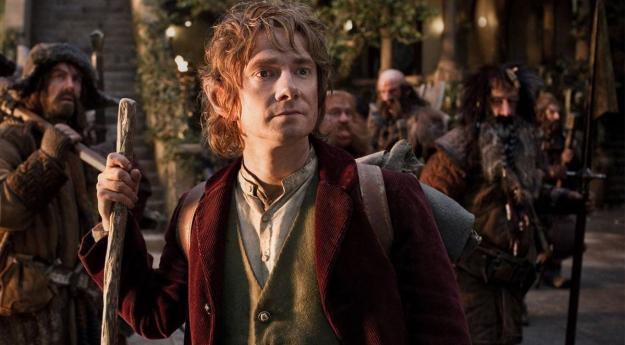
When Peter Jackson started shooting The Hobbit he had hoped to take a page out of James Cameron’s filmmaking book: Instead of merely creating an entertaining slice of fantasy spectacle, Jackson hoped to expand the horizon of how we all watch theatrical films by shooting the entire movie at a relatively blistering speed of 48 frames per second.
Unclear on what that means? Alright, let’s take this slow. With very few exceptions, most televisions broadcast images at a steady 24 frames per second. That’s just fast enough to create the illusion of movement from what is actually a rapid slideshow of still images, and it’s been something of a de facto standard in the world of broadcasting for decades. However, like standard definition television, this 24fps standard doesn’t really push the limits of what our eyeballs can do. Sure, 24fps looks just fine, but the vast majority of people are capable of processing pictures moving at speeds of up to 60fps. Beyond that our eyes normally can’t keep up with what they’re seeing, but by increasing the speed at which imagery is shown to a viewer the content they are watching can be made to appear far more smoothly animated than it might at 24fps. The most accessible example of this is found in video games: Those of you who play PC shooters that require a high level of dexterity and quick reflexes will certainly attest to the benefits of playing a game at 60fps.
So if broadcasting images at 60fps is so wonderful, why isn’t that the de facto Hollywood standard? There are many reasons, but in the end it boils down to a matter of cost. A two hour movie shot at 60fps will require more than twice as many frames of film as a movie shot at traditional speeds, and the vast majority of theater projectors (not to mention home televisions and the majority of Internet video sharing sites) would require pretty substantial software and/or hardware upgrades to even be able to display imagery that fast.
With that in mind, it’s not entirely surprising to see Warner Bros. balk at the idea of distributing a 48fps version of Peter Jackson’s The Hobbit. As we mentioned before, Jackson is shooting his entire Hobbit trilogy at 48fps, and while the WB was originally on board with this idea, it seems far less keen on the costly plan after clips of the movie running at this increased speed were met with hostile reactions at the recent San Diego Comic Con. Not that the geeks in attendance disliked the film itself, mind you, they just found the aberrant film speed to be distracting and uncomfortable. Unfortunately for Jackson and his WB overlords, this is the other major drawback of broadcasting at any speed above the standard 24fps: Most people are so used to watching things in that classic format that anything faster seems somehow wrong (despite its objective superiority).
Given that the WB would likely have to shell out huge amounts of cash to prepare the world for a wide release of a 48fps Hobbit film, the studio has opted to scale back its original plan. Now it seems that while a 48fps version of The Hobbit will hit theaters, it will be in very limited release and the vast majority of theaters showing Jackson’s films will be doing so at 24fps. It’s being speculated that if the first Hobbit movie does well in its 48fps incarnation (which, for the record, will also be in 3D as the faster frame rate greatly improves the appearance of 3D movies) that Warner Bros. may opt for larger releases of the 48fps versions of the rest of Jackson’s trilogy, though obviously nothing concrete can be said of the studio’s future plans just yet.


